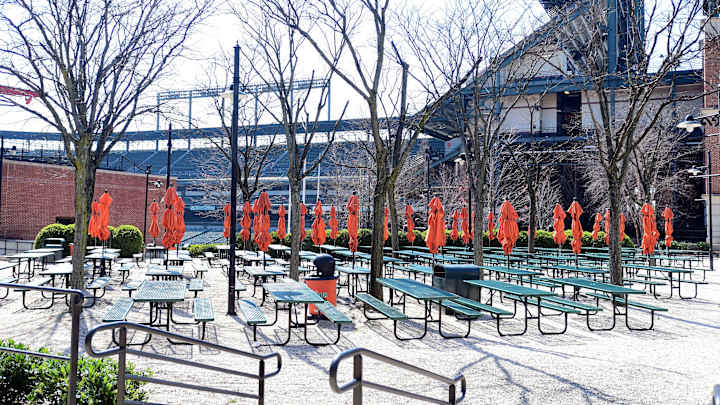Could MLB Games Speed Up When Baseball Returns Without Fans in Stands?

For a couple of decades, at least, Major League Baseball has been looking for ways to speed up baseball games.
There are those who argue that it’s not necessary, but most of the tweaks to the game in the last few years have been related to getting games to move along more quickly – limiting mound visits and forcing relievers to face at least three batters are just two of the latest.
It could be that the COVID-19 coronavirus will provide a way to speed things up. When baseball comes back, it will almost certainly be without fans in the stands.
And it was on this date five years ago, with the City of Baltimore in turmoil in the wake of the death of Freddie Gray, an African-American who died while in Baltimore City police custody. The first two games of a series between the visiting White Sox and Orioles had been postponed with civil unrest, some of it violent, near the Orioles’ Camden Yards home.
The Wednesday game was played – without fans. For more on that, theathletic.com has a terrific story up today with players, managers and umpires providing a compelling oral history about the experience.
The game was an 8-2 Orioles win. It was also played in 2 hours, 3 minutes. That would turn out to be six minutes faster than any other game played at Camden Yards that year. There hasn’t been a faster game there since, and you have to go back to 2010 for a faster nine-inning game in Baltimore.
At the time, baseball thought of that game as a one-off. Now all of baseball is looking at playing games with no fans. Extrapolating from one game in 2015 is problematic at best. But as Chris Sale, then a White Sox starter, told theathletic.com, he could feel the speed of the game without fans there to soak it all in.
“It was definitely different. The game was way faster,” Sale, who didn’t pitch that day, told theathletic.com. “It was a weird feeling having nobody in the stands. Hey, sometimes you’ve got to adapt. Sometimes you’ve got to do things for the greater good of what’s going on around you. That’s the situation we were in. Was it ideal? I would say no. But at the same time, you have to be sensitive to your surroundings and what’s going on. At the time, that’s what it took.”
In 2005, the average MLB game took 2 hours, 46 minutes. Last year it was 3 hours, 6 minutes, down from 3 hours, 8 minutes in 2017.
Baseball would never willingly speed up the game by keeping fans away. But with the pandemic almost certainly forcing games, when they start in June or July, to be played in empty stadiums, it seems likely games will move along more quickly.
That’s not a price baseball is going to want to pay, long term. As Sale said, a fan-less game was not ideal. Having fans in the stands has been part of the game since Alexander Cartwright of New York’s Knickerbocker Club took it upon himself to sketch out his version of the rules of baseball in 1845.
But in this time of pandemic, empty stands and faster games may be part of baseball’s new look.
Follow Athletics insider John Hickey on Twitter: @JHickey3
Click the "follow" button in the top right corner to join the conversation on Inside the Athletics on SI. Access and comment on featured stories and start your own conversations and post external links on our community page.
